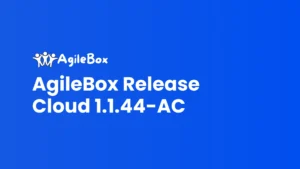In the world of getting things done, projects don’t always go as planned. But there’s a secret weapon many teams use: the retrospective meeting. It’s time to stop, look back at what happened, and figure out how to do better next time.
In this blog, we’ll explore what makes these meetings so important. From understanding what they are to finding the right format for your team, we’ll break it down into simple steps. So, let’s dive in and discover why running a retrospective meeting could be the key to smoother projects and happier teams.
What is a retrospective meeting?
A retrospective meeting is like a team huddle where everyone reflects on a recent project or task. It’s a chance to talk about what went well, what didn’t, and what can be improved. Picture it as a friendly chat where everyone shares their thoughts openly.

During a retrospective, team members discuss:
- What worked smoothly
- What caused problems or delays
- Ideas for doing things better next time
These meetings are usually led by a facilitator who keeps the discussion focused and ensures everyone gets a chance to speak. The goal: To learn from past experiences and make future projects even better.
→ Related content: 4 Agile Retrospective Ideas That Your Team Will Love
Why should you run a retrospective meeting?
Running a retrospective meeting isn’t just a formality; it’s a game-changer for teams striving to excel. Here’s why:
Reflection Leads to Improvement: Reflecting on past projects helps teams identify what worked well and what didn’t. This insight paves the way for continuous improvement, enabling teams to refine their processes and deliver better results in the future.
Fosters Collaboration and Communication: By providing a platform for open discussion, retrospective meetings foster collaboration among team members. Everyone gets a chance to voice their opinions, share ideas, and contribute to problem-solving, strengthening team cohesion and communication.
Identifies Root Causes: Retrospective meetings delve deep into the root causes of issues and setbacks encountered during projects. Instead of just addressing symptoms, teams can pinpoint underlying issues and devise targeted solutions, leading to more effective problem resolution.
Encourages Accountability: By collectively reviewing their performance, team members take ownership of both successes and failures. This accountability cultivates a culture of responsibility and empowerment, motivating individuals to strive for excellence in their roles.
Drives Continuous Learning: Retrospective meetings serve as valuable learning opportunities for teams to glean insights and lessons from their experiences. By embracing a growth mindset and embracing feedback, teams can adapt, innovate, and grow stronger with each iteration.
In essence, running a retrospective meeting isn’t just about looking back; it’s about laying the groundwork for a brighter future. It’s a proactive approach to project management that empowers teams to learn, evolve, and thrive in an ever-changing landscape.
→ Learn more about Retrospective Icebreaker
What is the right template retrospective meeting for you?
Various templates exist to facilitate these discussions, each offering a unique approach to uncovering insights and driving positive change. Let’s delve into some popular retrospective meeting templates:
DAKI (Drop, Add, Keep, Improve): DAKI prompts team members to identify aspects of the project they should drop, add, keep, or improve. It’s a straightforward template that encourages actionable feedback and drives continuous improvement.
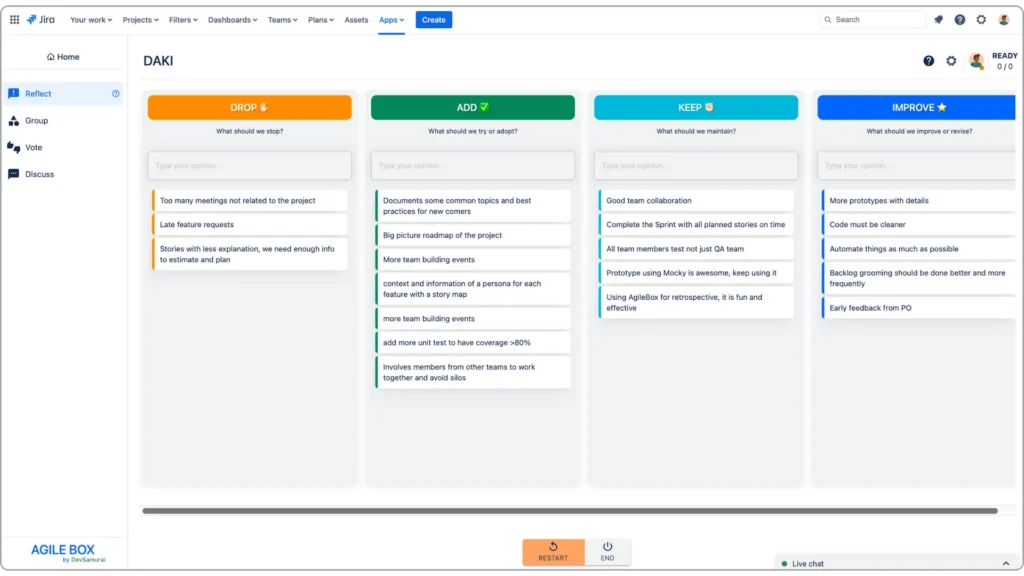
Energy levels: The Energy template focuses on the emotional energy levels of team members throughout the project. Participants reflect on moments that energized or drained them, helping to identify patterns and areas for improvement in team morale and motivation.
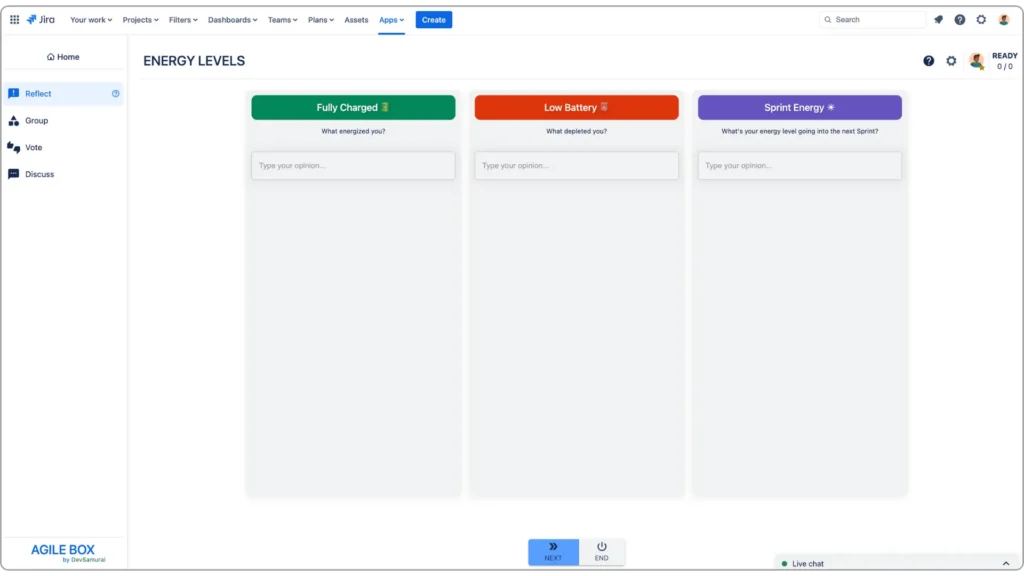
Glad, Mad, Sad: This simple yet effective template encourages team members to express their emotions about the project by identifying aspects that made them glad, mad, or sad. It fosters empathy, understanding, and open communication within the team.
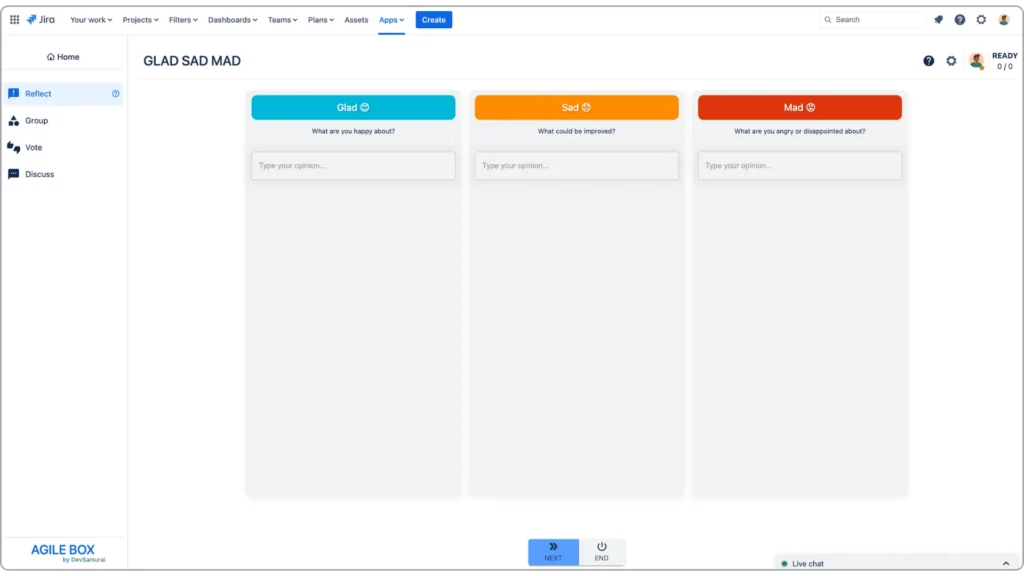
Highlight and Lowlights: In this template, team members share the highlights (positive aspects) and lowlights (negative aspects) of the project. It provides a balanced perspective on the team’s performance and encourages the celebration of successes while addressing challenges constructively.
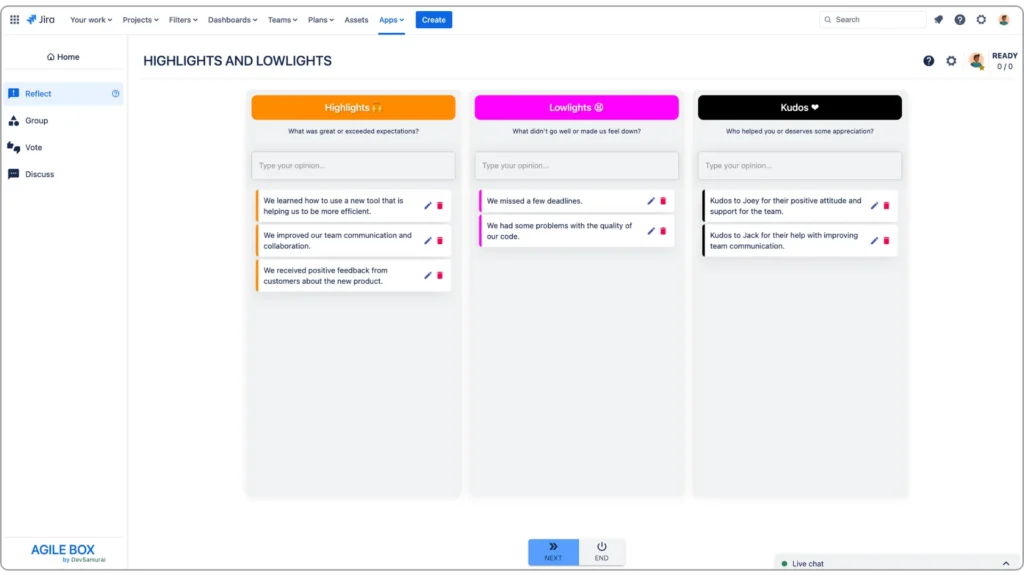
Hopes and Fears: Hopes and Fears prompt team members to articulate their aspirations and concerns for future projects. By voicing their hopes and fears, participants can align their goals and priorities, as well as address potential obstacles proactively.
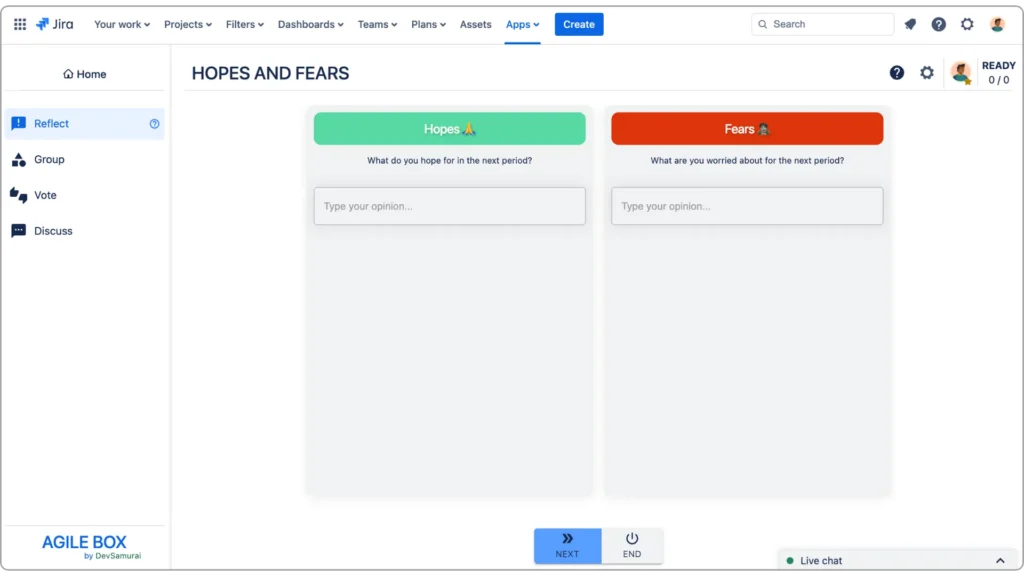
4Ls (Liked, Learned, Lacked, Longed For): This template encourages participants to reflect on what they liked, learned, lacked, and longed for during the project. It offers a comprehensive framework for discussing both positive experiences and areas for improvement.
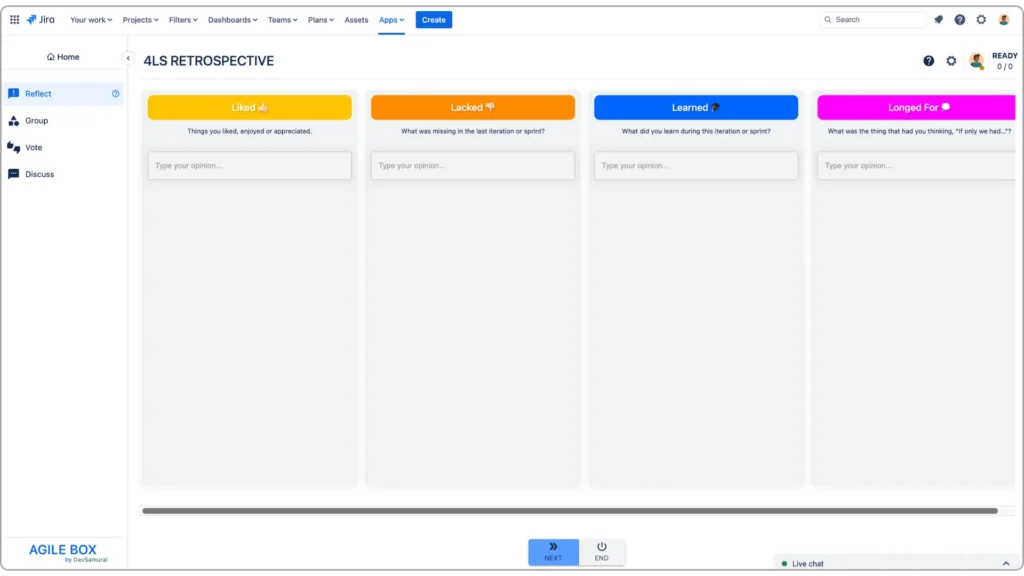
Mountain Climber: The Mountain Climber template uses the metaphor of climbing a mountain to represent the journey of the project. Team members identify the peak (successes), the valleys (challenges), and the paths taken, fostering a shared understanding of the project’s highs and lows.
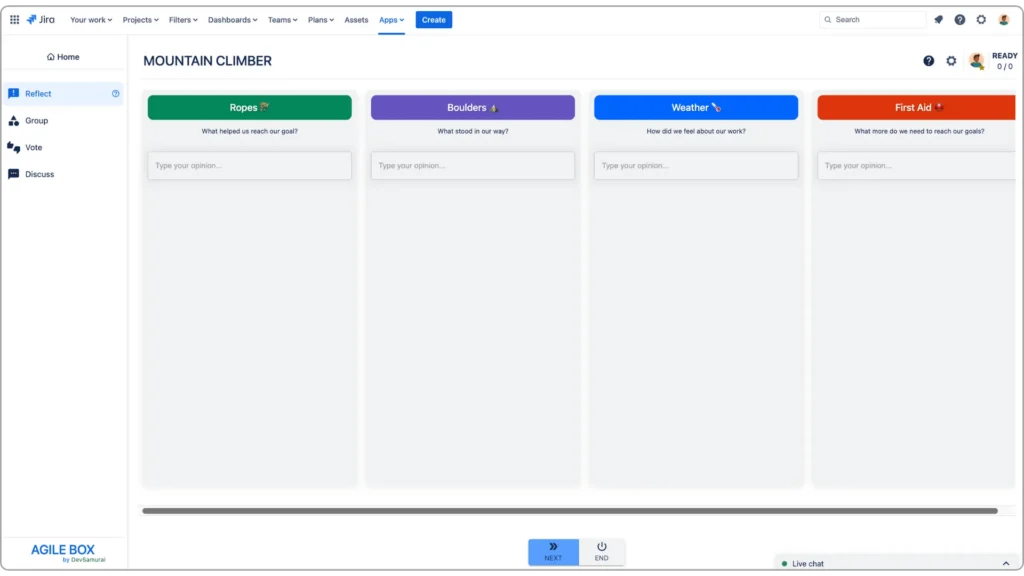
SWOT Analysis (Strengths, Weaknesses, Opportunities, Threats): Adapted from business strategy, the SWOT Analysis template helps teams assess the project’s internal strengths and weaknesses, as well as external opportunities and threats. It offers a strategic perspective on the project and informs future planning and decision-making.
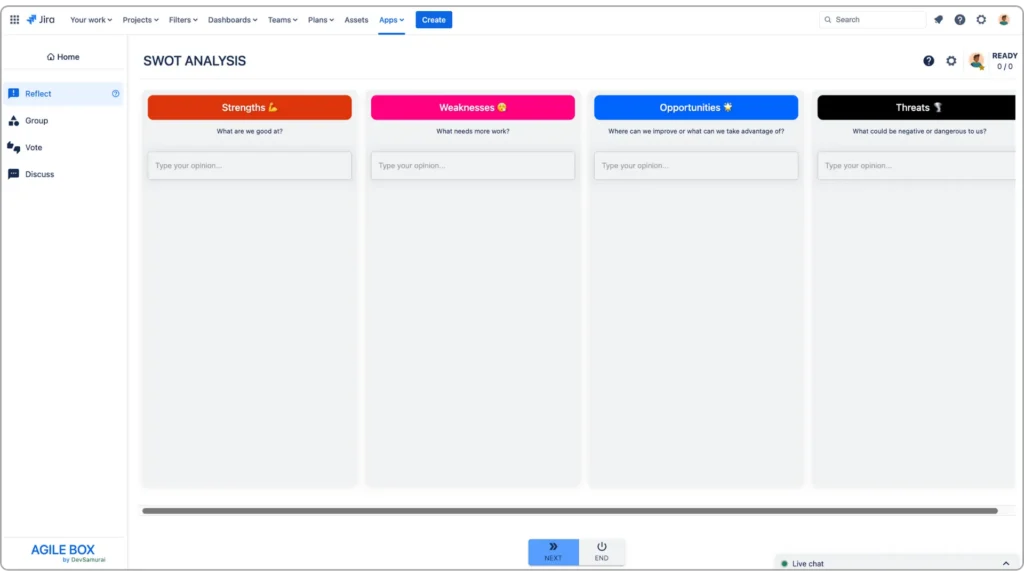
Each of these retrospective meeting templates offers a unique lens through which teams can reflect on their experiences, learn from their successes and failures, and drive continuous improvement
FAQ on Project Retrospective Meetings
As teams delve into the realm of retrospective meetings, common questions often arise. Let’s address some frequently asked questions to shed light on this essential practice:
How long should a retrospective meeting last?
The duration of a retrospective meeting can vary depending on the team’s size, the complexity of the project, and the depth of discussion. Typically, retrospective meetings last between 1 to 2 hours, allowing sufficient time for meaningful reflection and dialogue.
What are some common pitfalls to avoid in retrospective meetings?
One common pitfall is focusing solely on problems and assigning blame, which can create a negative atmosphere and hinder constructive dialogue. It’s essential to foster a blame-free environment where team members feel safe to voice their opinions and ideas openly. Additionally, avoid rushing through the retrospective or neglecting to follow up on action items identified during the meeting.
How can we ensure actionable outcomes from retrospective meetings?
To ensure actionable outcomes, it’s crucial to document the discussions, decisions, and action items from the retrospective meeting. Assign responsibilities for implementing action items and set clear deadlines for completion. Regularly review and track progress on action items in subsequent meetings to ensure accountability and follow-through.
Conclusion
Embrace the process, learn from every experience, and celebrate the victories along the way. With each retrospective meeting, your team grows stronger, more resilient, and better equipped to tackle the challenges that lie ahead. So, here’s to the power of reflection, collaboration, and continuous improvement. May your retrospectives be fruitful, your insights transformative, and your projects destined for success.


